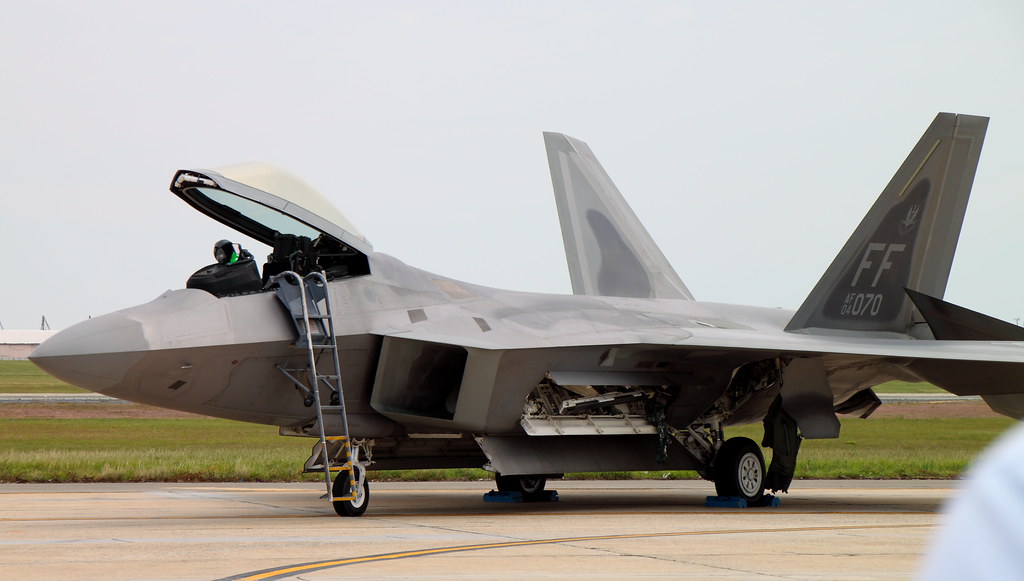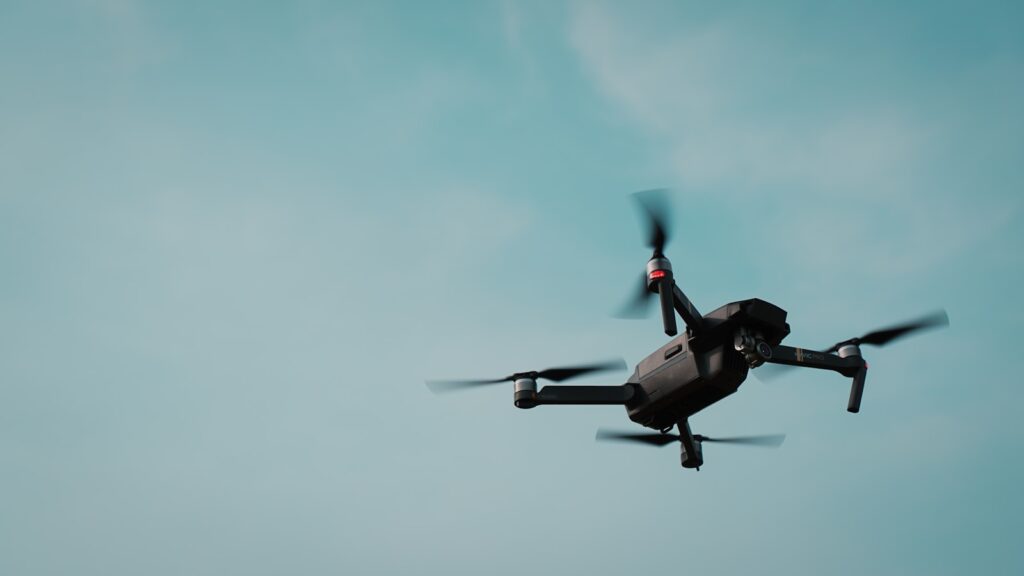
Recent weeks have seen a marked increase in tensions in the Caribbean Sea, largely stemming from intensified U.S. counter-narcotics operations and direct confrontations involving U.S. naval assets and Venezuelan vessels. These incidents underscore a complex and rapidly evolving dynamic between Washington and Caracas, characterized by differing interpretations of maritime law, accusations of aggression, and a strategic focus on combating alleged drug trafficking.
The U.S. government has ramped up its military presence in the southern Caribbean, citing the necessity of disrupting illegal drug smuggling routes. This enhanced operational tempo has led to several notable events, including a recent inspection of a Venezuelan fishing boat by the USS Jason Dunham and a prior, more forceful kinetic strike against an alleged drug vessel. Each incident has drawn strong reactions and raised significant questions on the international stage.
This in-depth examination delves into the factual accounts surrounding these key events, presenting the official statements and counter-claims from both the United States and Venezuela. By scrutinizing the details of vessel interdictions and the rationale behind aggressive military actions, we aim to provide a comprehensive understanding of the escalating situation and its immediate consequences in the region.
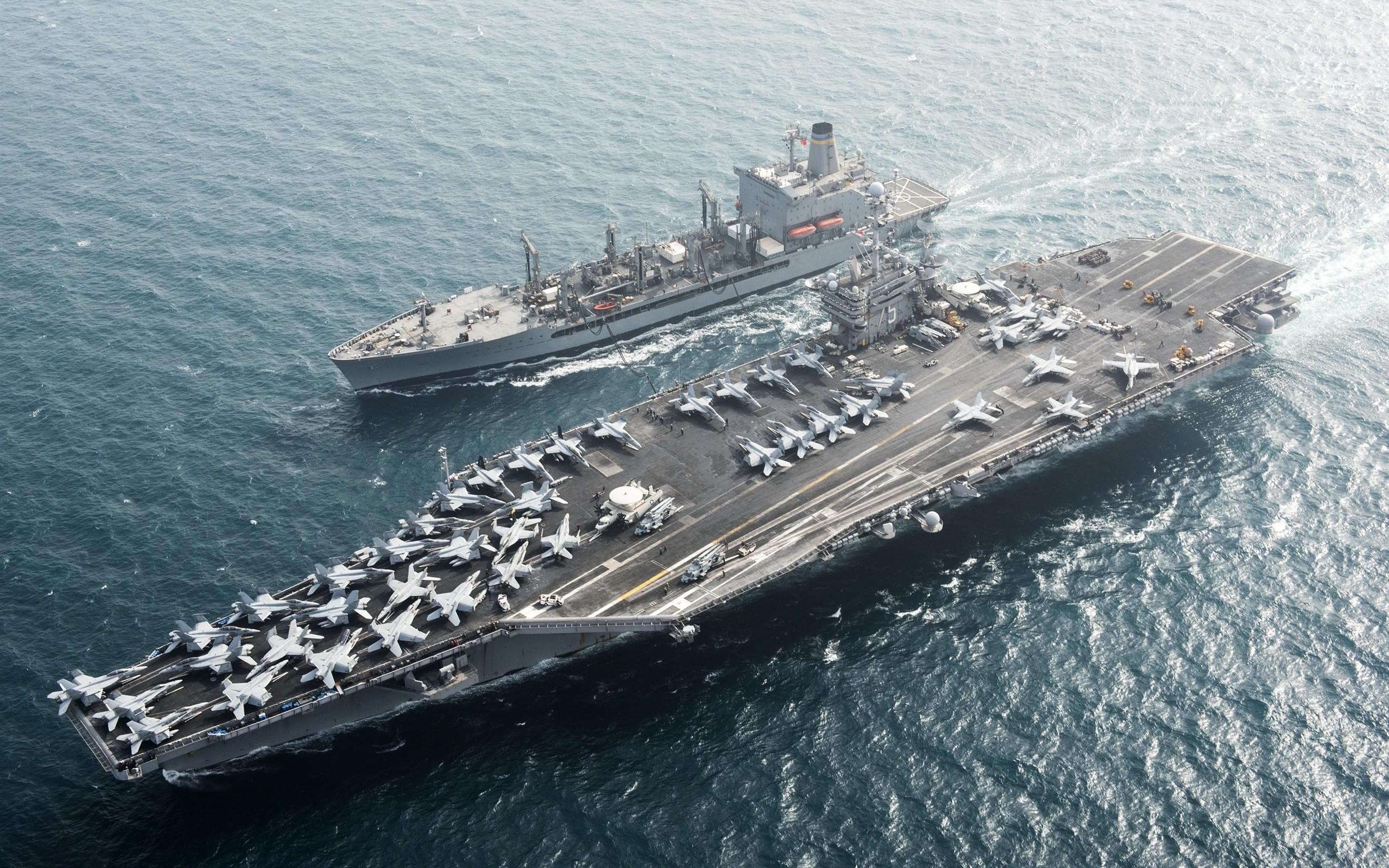
1. **The USS Jason Dunham’s Interdiction of a Venezuelan Fishing Boat** A U.S. official informed ABC News that Coast Guard personnel, operating from aboard the U.S. Navy destroyer USS Jason Dunham, conducted a search of a Venezuelan fishing boat for drugs. This operation occurred on a Friday following an intelligence tip, though no contraband was ultimately located on the vessel. The incident marks a tangible manifestation of the U.S. Navy’s increased presence and operational engagement in the southern Caribbean Sea.
Venezuela’s foreign ministry identified the vessel as a tuna fishing boat carrying nine fishermen, specifying its location as 48 nautical miles northeast of La Blanquilla Island, which is a Venezuelan territory. The ministry asserted that the boat had valid authorization from the Ministry of Fisheries to conduct its work, underlining its civilian and legitimate operational status within the region.
The U.S. Navy has deployed several warships to the southern Caribbean Sea since early August, with the stated purpose of engaging in anti-drug trafficking operations. The incident involving the fishing boat represents the first publicly announced instance of personnel from these warships interdicting a vessel specifically for drug-related suspicions, drawing immediate attention to the nature of these ongoing operations.
The details of the interdiction remain a point of contention. While the U.S. confirmed the search, its officials have offered differing accounts regarding the exact location and duration compared to Venezuelan claims. This discrepancy highlights the diplomatic challenges inherent in conducting law enforcement activities in internationally sensitive waters amidst heightened bilateral tensions.
Military equipment: History of the United States Marine Corps
Categories: Articles with short description, CS1: long volume value, Commons category link from Wikidata, History of the United States Armed Forces by service branch, History of the United States Marine Corps
Summary: The history of the United States Marine Corps (USMC) begins with the founding of the Continental Marines on 10 November 1775 to conduct ship-to-ship fighting, provide shipboard security and discipline enforcement, and assist in landing forces. Its mission evolved with changing military doctrine and foreign policy of the United States. Owing to the availability of Marine forces at sea, the United States Marine Corps has served in nearly every conflict in United States history. It attained prominence when its theories and practice of amphibious warfare proved prescient, and ultimately formed a cornerstone of U.S. strategy in the Pacific Theater of World War II. By the early 20th century, the Marine Corps would become one of the dominant theorists and practitioners of amphibious warfare. Its ability to rapidly respond on short notice to expeditionary crises has made and continues to make it an important tool for U.S. foreign policy.
In February 1776, the Continental Marines embarked on their maiden expedition. The Continental Marines were disbanded at the end of the war, along with the Continental Navy. In preparation for the Quasi-War with France, Congress created the United States Navy and the Marine Corps. The Marines’ most famous action of this period occurred in the First Barbary War (1801–1805) against the Barbary pirates. In the Mexican–American War (1846–1848), the Marines made their famed assault on Chapultepec Palace, which overlooked Mexico City, their first major expeditionary venture. In the 1850s, the Marines would see service in Panama, and in Asia. During the U.S. Civil War (1861–1865) the Marine Corps played only a minor role after their participation in the Union defeat at the first battle of First Bull Run/Manassas. Their most important task was blockade duty and other ship-board battles, but they were mobilized for a handful of operations as the war progressed. The remainder of the 19th century would be a period of declining strength and introspection about the mission of the Marine Corps. Under Commandant Jacob Zeilin’s term (1864–1876), many Marine customs and traditions took shape. During the Spanish–American War (1898), Marines would lead U.S. forces ashore in the Philippines, Cuba, and Puerto Rico, demonstrating their readiness for deployment. Between 1900 and 1916, the Marine Corps continued its record of participation in foreign expeditions, especially in the Caribbean and Central and South America, which included Panama, Cuba, Veracruz, Haiti, Santo Domingo, and Nicaragua.
In World War I, battle-tested, veteran Marines served a central role in the United States’ entry into the conflict. Between the world wars, the Marine Corps was headed by Major General John A. Lejeune, another popular commandant. In World War II, the Marines played a central role, under Admiral Nimitz, in the Pacific War, participating in nearly every significant battle. The Corps also saw its peak growth as it expanded from two brigades to two corps with six divisions, and five air wings with 132 squadrons. During the Battle of Iwo Jima, photographer Joe Rosenthal took the famous photo Raising of the Flag on Iwo Jima of five Marines and one naval corpsman raising a U.S. flag on Mount Suribachi. The Korean War (1950–1953) saw the 1st Provisional Marine Brigade holding the line at the Battle of Pusan Perimeter, where Marine helicopters (VMO-6 flying the HO3S1 helicopter) made their combat debut. The Marines also played an important role in the Vietnam War at battles such as Da Nang, Huế, and Khe Sanh. The Marines operated in the northern I Corps regions of South Vietnam and fought both a constant guerilla war against the Viet Cong and an off and on conventional war against North Vietnamese Army regulars. Marines went to Beirut during the 1982 Lebanon War on 24 August. On 23 October 1983, the Marine barracks in Beirut was bombed, causing the highest peacetime losses to the Corps in its history. Marines were also responsible for liberating Kuwait during the Gulf War (1990–1991), as the Army made an attack to the west directly into Iraq. The I Marine Expeditionary Force had a strength of 92,990, making Operation Desert Storm the largest Marine Corps operation in history.
Get more information about: History of the United States Marine Corps

2. **Venezuela’s Accusations of Illegal Boarding** The Venezuelan government vehemently accused U.S. personnel of illegally boarding and occupying a civilian fishing boat. On Saturday, Venezuela’s Foreign Ministry office claimed that the U.S. Navy deployed “eighteen personnel with long-range weapons who boarded and occupied” the Venezuelan fishing vessel, emphasizing the perceived disproportionate use of military force.
According to the Venezuelan Foreign Ministry, the incident occurred in waters within Venezuela’s Exclusive Economic Zone (EEZ), a claim that directly challenges the legality of the U.S. operation from Caracas’ perspective. This assertion of territorial violation forms the core of Venezuela’s strong diplomatic protest.
Foreign Minister Yván Gil, speaking on Saturday, described the act as “illegally and hostilely boarded by a United States Navy destroyer,” and stated that the 18 armed personnel remained on the vessel for eight hours, disrupting communication and the fishermen’s activities. He characterized the incident as an act of “direct provocation” and “illegal use of excessive military means.”
The Venezuelan government further escalated its rhetoric, alleging that those who ordered the seizure were “looking for an incident to justify escalating war in the Caribbean, with the aim of regime change” in Caracas. This accusation positions the U.S. actions not merely as counter-narcotics efforts, but as part of a broader political strategy aimed at destabilizing the Venezuelan government. The ministry demanded an immediate cessation of such actions, citing threats to security and peace in the Caribbean.
Military equipment: Narcosobrinos affair
Title: Narcosobrinos affair
Partof: war on drugs
Caption: Campo (second from left) and Flores (third from right) following their arrest.
Date: Tue Nov 10 2015 00:00:00 GMT-0800 (Pacific Standard Time)
Location: Port-au-Prince, Haiti
Suspects: Efraín Antonio Campo Flores
Categories: 2015 in Haiti, 2015 in Venezuela, All Wikipedia articles written in American English, Articles with short description, CS1: unfit URL
Summary: The Narcosobrinos affair (Spanish for drug-nephews) is the situation of events that surrounded two nephews of Venezuelan President Nicolás Maduro and his wife Cilia Flores who were arrested for narcotics trafficking. The nephews, Efraín Antonio Campo Flores and Francisco Flores de Freitas, were arrested on 10 November 2015 by the United States Drug Enforcement Administration in Port-au-Prince, Haiti after attempting to transport 800 kilograms (1,800 lb) of cocaine into the United States. A year later on 18 November 2016, the two nephews were found guilty, with the cash allegedly destined to “help their family stay in power”. On 14 December 2017, the two were sentenced to 18 years of imprisonment.
In October 2022, Campos and Flores were released and sent to Venezuela as a prisoner swap reached with United States in exchange of five Venezuelan-American directors of the oil refinery corporation CITGO (part of the Citgo Six) imprisoned in Venezuela.
Get more information about: Narcosobrinos affair
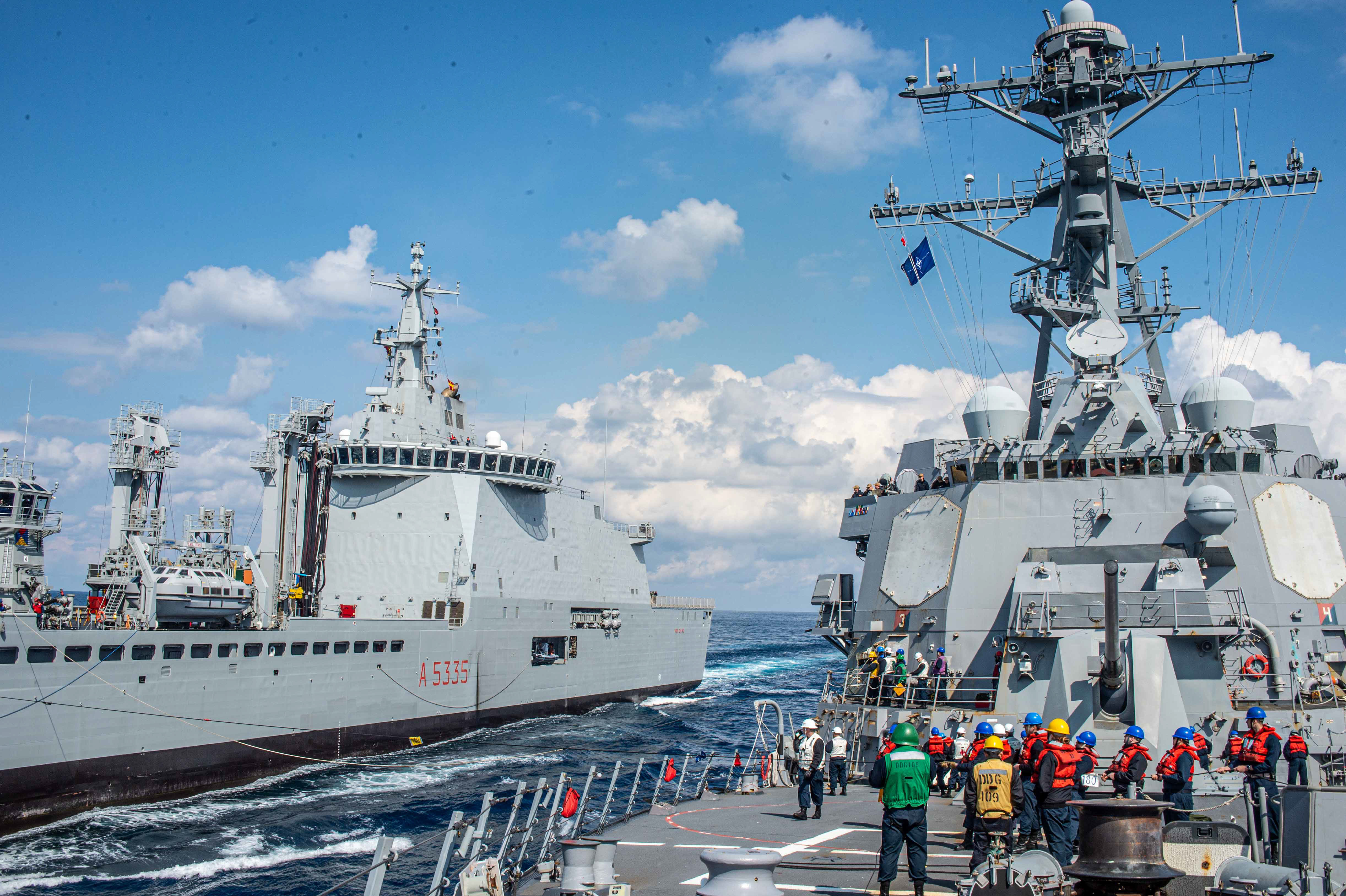
3. **U.S. Official’s Account and Disputed Details** A U.S. official, speaking to ABC News, confirmed that the U.S. Navy destroyer USS Jason Dunham received information indicating the need to board the Venezuelan small craft to ascertain if it was carrying drugs. This official account provides the operational basis for the interdiction, originating from intelligence gathered prior to the boarding.
The law enforcement detachment stationed aboard the USS Jason Dunham subsequently boarded the Venezuelan craft. A thorough search was carried out by the personnel; however, according to the U.S. official, this search ultimately yielded no drugs or other contraband, directly contrasting with the U.S. objective for the interdiction.
Crucially, the U.S. official disputed several key claims made by the Venezuelan foreign ministry regarding the incident. Specifically, the official contended that the search did not take eight hours, as alleged by Venezuela. Furthermore, the U.S. side maintained that the boat was operating in international waters, not within Venezuela’s Exclusive Economic Zone, thereby challenging Caracas’ claim of a territorial violation.
This differing narrative on location and duration is central to the ongoing dispute, reflecting the divergent legal and political stances of the two nations. The U.S. perspective suggests adherence to international maritime law governing searches in open waters, while Venezuela emphasizes its sovereign rights within its claimed economic zone.
Military equipment: 2000 United States presidential election
ElectionName: 2000 United States presidential election
Country: United States
FlagYear: 1900
Type: presidential
Ongoing: no
PreviousElection: 1996 United States presidential election
PreviousYear: 1996
ElectionDate: Tue Nov 07 2000 00:00:00 GMT-0800 (Pacific Standard Time)
NextElection: 2004 United States presidential election
NextYear: 2004
VotesForElection: List of 2000 United States presidential electors
NeededVotes: 270 electoral
Turnout: percentage point
Nominee1: George W. Bush
Party1: Republican Party (United States)
HomeState1: Texas
RunningMate1: Dick Cheney
ElectoralVote1: 271
StatesCarried1: 30
PopularVote1: 50,456,002
Percentage1: percent
Nominee2: Al Gore
Party2: Democratic Party (United States)
HomeState2: Tennessee
RunningMate2: Joe Lieberman
ElectoralVote2: 266
StatesCarried2: Washington D.C.
PopularVote2: 50,999,897
Percentage2: percent
MapSize: 350px
Map: 2000 United States presidential election imagemap
MapCaption: Faithless elector
Title: President
BeforeElection: Bill Clinton
BeforeParty: Democratic Party (United States)
AfterElection: George W. Bush
AfterParty: Republican Party (United States)
Categories: 2000 United States presidential election, Al Gore, All Wikipedia articles written in American English, All articles needing additional references, All articles with lists with data missing
Summary: Presidential elections were held in the United States on November 7, 2000. Republican Governor George W. Bush of Texas, the eldest son of 41st President George H. W. Bush, and former Secretary of Defense Dick Cheney very narrowly defeated incumbent Democratic Vice President Al Gore and Senator Joe Lieberman. It was the fourth of five U.S. presidential elections, and the first since 1888, in which the winning candidate lost the popular vote, and is considered one of the closest U.S. presidential elections in history, with long-standing controversy about the result.
Incumbent Democratic President Bill Clinton was ineligible to seek a third term because of term limits established by the 22nd Amendment. Incumbent Vice President Gore easily secured the Democratic nomination, defeating former New Jersey Senator Bill Bradley in the primaries. He selected Connecticut Senator Joe Lieberman as his running mate. Bush was seen as the early favorite for the Republican nomination, and after a contentious primary battle with Arizona Senator John McCain and others, he secured the nomination by Super Tuesday. He selected former Secretary of Defense Dick Cheney as his running mate.
Both major-party candidates focused primarily on domestic issues, such as the budget, tax relief, and reforms for federal social insurance programs, although foreign policy was not ignored. Due to President Clinton’s sex scandal with Monica Lewinsky and subsequent impeachment, Gore avoided campaigning with Clinton. Republicans denounced Clinton’s indiscretions, while Gore criticized Bush’s lack of experience.
On election night, it was unclear who had won, with the electoral votes of the state of Florida still undecided. It took over a month to resolve the issue: recounts and ensuing litigation were finally settled by the highly controversial U.S. Supreme Court decision Bush v. Gore, which ensured that Florida’s electoral votes went to Bush, tipping the election in his favor. Bush carried Florida by only 537 votes out of 5.96 million cast in the state (a margin of 0.009%).
Ultimately, Bush won 271 electoral votes, one vote more than the 270 required to win, while Gore won the popular vote by 543,895 votes (a margin of 0.52% of all votes cast). Bush flipped 11 states that had voted Democratic in 1996: Arkansas, Arizona, Florida, Kentucky, Louisiana, Missouri, Nevada, New Hampshire, Ohio, Tennessee, and West Virginia. Despite Gore’s loss, this election marked the first time since 1948 that the Democratic Party won the popular vote in three consecutive elections.
Get more information about: 2000 United States presidential election
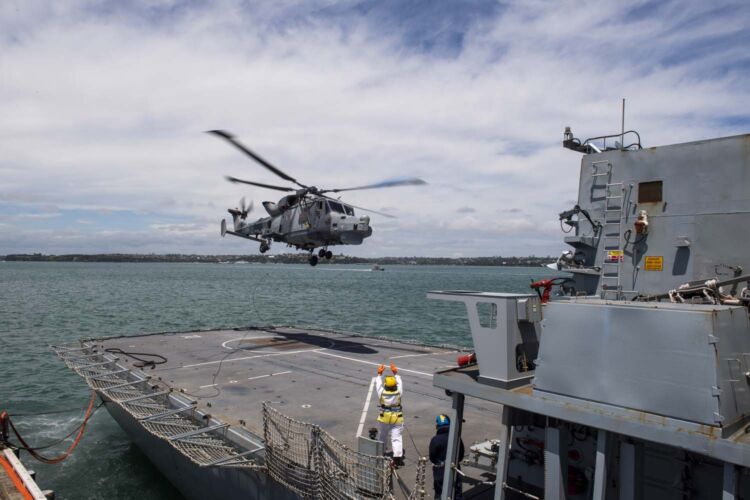
4. **U.S. Counter-Narcotics Operations in the Caribbean** The recent interdiction and the broader military presence are part of a larger U.S. strategy to combat drug trafficking in the region. Earlier this month, President Trump announced that he had ordered an increased military presence in the ocean specifically to tackle illegal drug smuggling, signaling a more aggressive posture in counter-narcotics efforts.
This increased presence involves a significant deployment of naval and aerial assets. The U.S. has moved several warships into the southern Caribbean, including destroyers, a cruiser, and an amphibious ready group carrying a Marine Expeditionary Unit. Alongside these vessels, at least 4,500 military troops have been deployed to the area, supplementing U.S. P-8 maritime patrol aircraft conducting surveillance missions.
Among the assets deployed are the USS San Antonio, USS Iwo Jima, USS Fort Lauderdale, and reportedly the USS Lake Erie, USS Gravely, and the USS Jason Dunham. These deployments are explicitly framed by the U.S. military as “counter-narco-terror operations” and anti-drug trafficking initiatives, reflecting a strategic alignment of military capabilities with law enforcement objectives.
The U.S. Coast Guard, frequently collaborating with the Navy, routinely interdicts vessels suspected of carrying drugs. These operations typically involve searching vessels and seizing narcotics when found. The current surge in military presence and the nature of some recent incidents, however, indicate an escalation beyond traditional law enforcement practices.
Military equipment: War on drugs
Conflict: War on drugs
Partof: Post–Cold War era
Caption: Public service announcement
Date: Age in months, weeks and days
Place: Global
Status: Ongoing, widely viewed as a policy failure
Combatant1: United States,Foreign relations of the United States,Mexican drug war,Colombian conflict,Salvadoran gang crackdown,Honduran gang crackdown,Ecuadorian conflict (2024–present),Philippines drug war,Interpol,United Nations,NATO
Combatant2: Gulf Cartel,Sinaloa Cartel,Jalisco New Generation Cartel,La Nueva Familia Michoacana Organization,Cártel del Noreste,La Resistencia (gang),2025 U.S. military campaign against cartels,Cartel of the Suns,Tren de Aragua,Los Choneros,Los Lobos (gang),Mara Salvatrucha,Barrio 18,2021 Kabul airlift,flagicon image,US invasion of Panama,Medellin Cartel,Cali Cartel,Guadalajara Cartel
Commander1: ubli
Commander2: ubli,Juan García Abrego
Campaignbox: Campaignbox Operations in the War on drugs
Categories: 1970s neologisms, 1980s conflicts, 1990s conflicts, 2000s conflicts, 2010s conflicts
Summary: The war on drugs, sometimes referred to in the 21st century as the war on cartels in contexts of military intervention and counterterrorism, is a global anti-narcotics campaign led by the United States federal government, including drug prohibition and foreign assistance, with the aim of reducing the illegal drug trade in the US. The initiative’s efforts includes policies intended to discourage the production, distribution, and consumption of psychoactive drugs that the participating governments, through United Nations treaties, have made illegal.
The term “war on drugs” was popularized by the media after a press conference, given on June 17, 1971, during which President Richard Nixon declared drug abuse “public enemy number one”. Earlier that day, Nixon had presented a special message to the US Congress on “Drug Abuse Prevention and Control”, which included text about devoting more federal resources to the “prevention of new addicts, and the rehabilitation of those who are addicted”; that aspect did not receive the same media attention as the term “war on drugs”.
In the years since, presidential administrations and Congress have generally maintained or expanded Nixon’s original initiatives, with the emphasis on law enforcement and interdiction over public health and treatment. Cannabis presents a special case; it came under federal restriction in the 1930s, and since 1970 has been classified as having a high potential for abuse and no medical value, with the same level of prohibition as heroin. Multiple mainstream studies and findings since the 1930s have recommended against such a severe classification. Beginning in the 1990s, cannabis has been legalized for medical use in 39 states, and also for recreational use in 24, creating a policy gap with federal law and non-compliance with the UN drug treaties.
In June 2011, the Global Commission on Drug Policy released a critical report, declaring: “The global war on drugs has failed, with devastating consequences for individuals and societies around the world.” In 2023, the UN high commissioner for human rights stated that “decades of punitive, ‘war on drugs’ strategies had failed to prevent an increasing range and quantity of substances from being produced and consumed.” That year, the annual US federal drug war budget reached $39 billion, with cumulative spending since 1971 estimated at $1 trillion.
Get more information about: War on drugs
Read more about: Unveiling the Shadow Warriors: Inside the Secret World of Navy SEALs and Their Unmatched Legacy
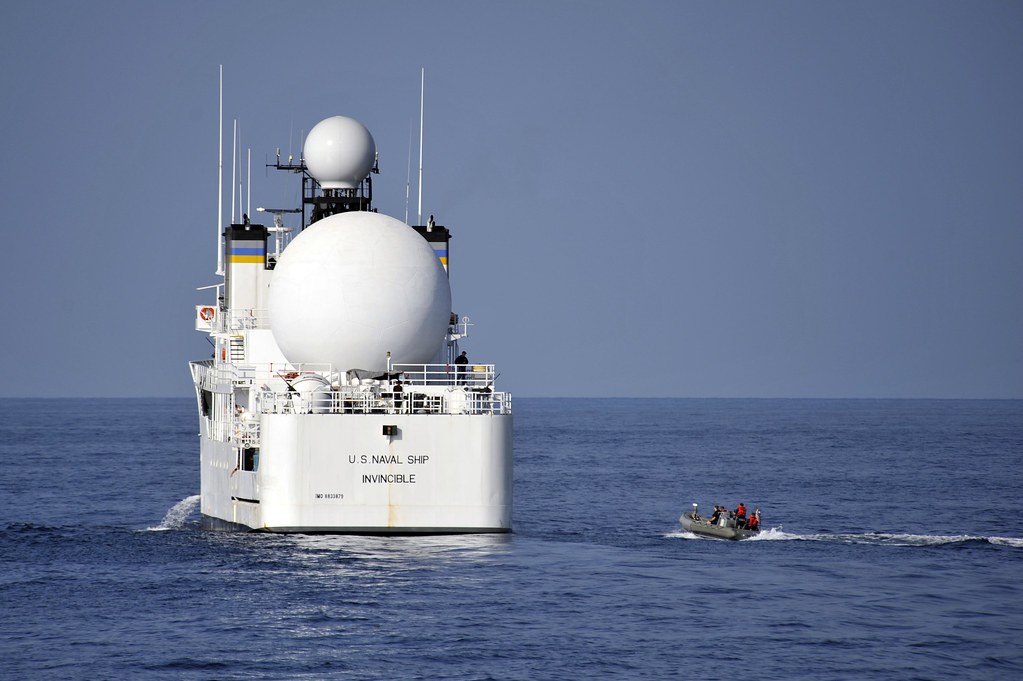
5. **The September 2nd Kinetic Strike and Fatalities** On September 2nd, President Donald Trump announced that, on his orders, U.S. military forces conducted a kinetic strike against an alleged drug boat. This operation, described as a “lethal” and “precision” strike by Secretary of State Marco Rubio, targeted a vessel identified as originating from South America and traveling along a common trafficking route in the southern Caribbean.
Trump later stated that the strike resulted in 11 alleged terrorists killed. The attack marked a significant escalation, representing the first known use of direct military force against a drug cartel’s maritime operations since the deployment of additional U.S. warships to the region, according to news reports. The President shared a video on Truth Social, which appeared to show drone footage of a speedboat being struck, exploding, and catching fire.
Very few details were initially released about the strike’s execution. A senior U.S. defense official characterized it as a “precision strike” but did not specify the platform or weapons used. Speculation, however, suggested the weapon involved could have been an AGM-114 Hellfire missile, possibly delivered by an MH-60S helicopter, with callsign OUTLW71, observed in the San Juan Oceanic Flight Information Region (FIR).
The choice to destroy the vessel outright, rather than to seize it and apprehend its crew, represents a departure from traditional U.S. counter-narcotics operations. Analysts noted that the strike more closely resembled counterterrorism operations against militant groups, raising questions about the proportionality and legality of the action under international law.
Military equipment: History of the M1 Abrams
Categories: All articles lacking reliable references, All articles to be expanded, All articles with bare URLs for citations, All articles with dead external links, All articles with unsourced statements
Summary: The M1 Abrams main battle tank has been in service since 1980. Since then, it has gone through dozens of upgrades and been the baseline variant of several vehicles.
Get more information about: History of the M1 Abrams

6. **Identification of Tren de Aragua and Narco-Terrorism Claims** Following the September 2nd kinetic strike, President Trump asserted that the vessel’s crew were members of Tren de Aragua, which he identified as a Venezuelan gang. This identification provided a key justification for the lethal force employed, framing the operation within the context of combating terrorism and protecting U.S. national security.
The U.S. State Department had previously designated Tren de Aragua as a Foreign Terrorist Organization. This designation is critical, as U.S. officials defended the strike’s legality under the authority granted to target such organizations. Trump emphasized that these “extremely violent drug trafficking cartels pose a threat to US national security” and are responsible for “flooding American streets and killing Americans.”
Secretary of State Marco Rubio reiterated this stance, confirming the strike against a “narco-terrorist vessel” and stressing that such operations would continue as part of a broader effort to “wage combat against drug cartels.” He stated Washington had “100% fidelity and certainty” that the vessel was involved in trafficking to the US, further bolstering the official narrative for the strike.
The U.S. also claimed that the Tren de Aragua group operates under the control of Venezuelan President Nicolás Maduro, an accusation Caracas has vehemently denied. This link between the alleged narco-terrorist group and the Venezuelan government adds another layer of complexity to the U.S. rationale, intertwining counter-narcotics with broader political pressure on the Maduro administration.
Military equipment: Tren de Aragua
Name: Tren de Aragua
NativeNameLang: es
Founded: [object Object]
FoundingLocation: Aragua
YearsActive: 2014-present
Territory: Flatlist
Ethnicity: Venezuelans
Membership: 7,000+
Leaders: Héctor Rusthenford Guerrero Flores “Niño Guerrero”
Activities: Murder,protection racket
Allies: Primeiro Comando da Capital
Rivals: La Oficina de Envigado,Clan del Golfo,FARC dissidents
Work: Cronica
Title: Otros dos asesinatos ocurrieron por guerra entre disidencias de las FARC y Tren de Aragua
Date: Mon Aug 16 2021 00:00:00 GMT-0700 (Pacific Daylight Time)
Url: National Liberation Army (Colombia),flagicon,Carabineros de Chile
Categories: 2010s establishments in Venezuela, 2020s establishments in Chile, All Wikipedia neutral point of view disputes, All articles to be split, All articles with unsourced statements
Summary: Tren de Aragua (TdA, TDA; Spanish pronunciation: [tɾen de aˈɾaɣwa]; English: Aragua Train) is a transnational criminal organization from Venezuela. Tren de Aragua is led by Héctor Rusthenford Guerrero Flores, alias “Niño Guerrero”; he was incarcerated in Tocorón prison (also known as Aragua Penitentiary Center), which functioned at the time as the organization’s de facto headquarters. The gang has expanded throughout Latin America and the United States with the mass migration of Venezuelans fleeing the regime of President Nicolás Maduro. Combating the gang has become a priority for many nations where Tren de Aragua operates. Though Tocorón prison was taken over by Venezuelan security forces in 2023, the leadership escaped.
On 20 January 2025, US President Donald Trump signed an executive order initiating the process of designating various drug cartels and transnational gangs, including Tren de Aragua, as Foreign Terrorist Organizations. The designation took effect on 20 February 2025. In March 2025, the Trump administration ordered the deportation of alleged Tren de Aragua members, citing the Alien Enemies Act of 1798. The order was temporarily halted pending further legal challenges.
In the United States, President Donald Trump has referenced Tren de Aragua in discussions of immigration policy, comparing it to organizations such as Al-Qaeda, citing its reported presence when invoking the Alien Enemies Act of 1798, a wartime law historically applied in contexts of armed conflict. This legislation affected deportation procedures for Venezuelan nationals, with the administration arguing they posed a terrorist threat. U.S. intelligence reports have indicated that the group operates independently of Venezuelan state control and lacks a coordinated structure within the country. Some analysts have compared current patterns to the 1980 Mariel boatlift, when the Cuban regime allowed mass departure of citizens, including a significant number of common prisoners and others deemed undesirable. Reports indicate criminal elements have migrated among those fleeing the ongoing humanitarian crisis, with some joining networks like Tren de Aragua in other countries. The 2023 raid on the Tocorón Penitentiary Center, considered the group’s headquarters, occurred following reports of crimes committed by the faction in neighboring nations. According to expert Keymer Ávila, both Trump’s narrative and the Venezuelan government’s handling of the situation reflect political motivations. Ávila notes that Venezuela’s structural crisis has forced millions to migrate, many of whom are later stigmatized as criminals without evidence.
Get more information about: Tren de Aragua
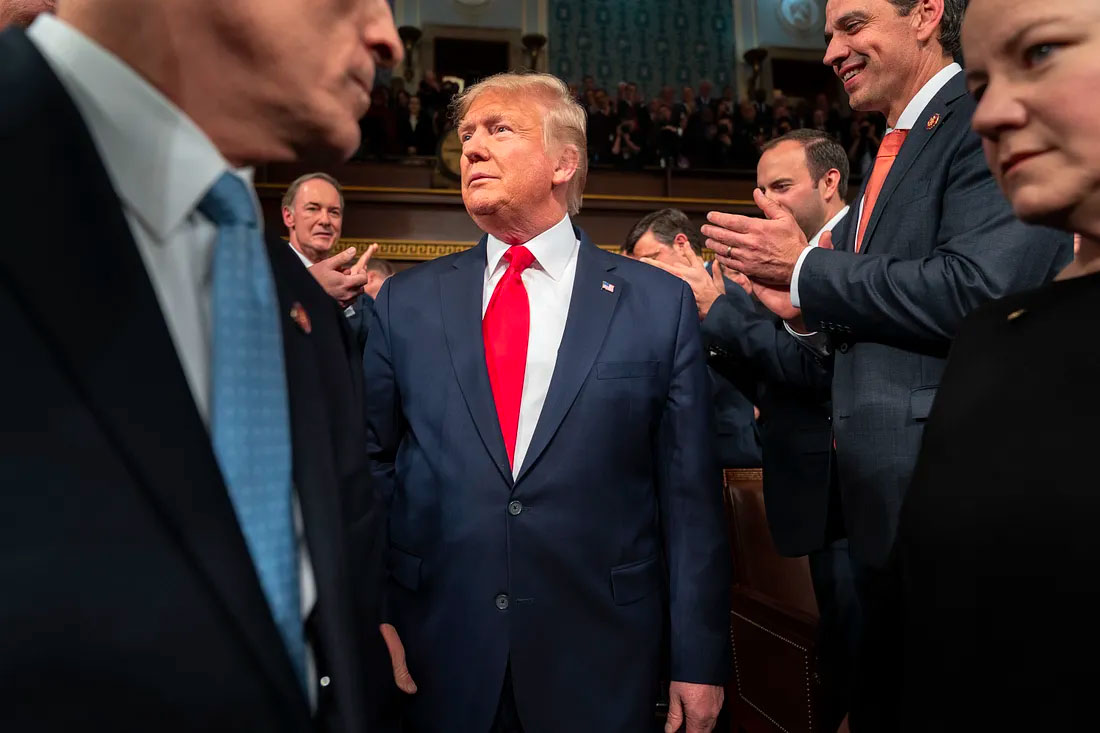
7. **Evidence Presented by President Trump** President Trump made explicit claims about the evidence gathered to support the U.S. actions, particularly concerning the September 2nd strike. He stated that the U.S. had “recorded proof and evidence that the boats belonged to narco-terrorist groups,” asserting meticulous care in documenting the operations due to anticipated scrutiny.
In a notable declaration, Trump detailed the nature of the alleged cargo found after the strike. He claimed, “All you have to do is look at the cargo – it was spattered all over the ocean – big bags of cocaine and fentanyl all over the place.” This specific description aimed to substantiate the U.S. assertion that the destroyed vessel was indeed a drug-carrying boat, justifying the use of lethal force.
Adding to the presented evidence, Trump posted a nearly 30-second video on Truth Social, which he said was footage of the strike. The video appeared to show a vessel in a body of water exploding and then bursting into flames. This visual documentation was intended to provide concrete proof of the operation and its outcome.
However, the authenticity of the video was challenged by Venezuela’s Communications Minister Freddy Ñáñez, who claimed it could have been created with artificial intelligence, pointing to “stylized and unnatural” water effects. Despite this counter-claim, preliminary analyses by Reuters and BBC reported finding no evidence of manipulation, though verification efforts have continued.”
Military equipment: False or misleading statements by Donald Trump
Categories: All Wikipedia articles in need of updating, All Wikipedia articles written in American English, All articles lacking reliable references, All articles that may be too long, All articles with dead external links
Summary: During and between his terms as President of the United States, Donald Trump has made tens of thousands of false or misleading claims. Fact-checkers at The Washington Post documented 30,573 false or misleading claims during his first presidential term, an average of 21 per day. The Toronto Star tallied 5,276 false claims from January 2017 to June 2019, an average of six per day. Commentators and fact-checkers have described Trump’s lying as unprecedented in American politics, and the consistency of falsehoods as a distinctive part of his business and political identities. Scholarly analysis of Trump’s X posts found significant evidence of an intent to deceive.
Many news organizations initially resisted describing Trump’s falsehoods as lies, but began to do so by June 2019. The Washington Post said his frequent repetition of claims he knew to be false amounted to a campaign based on disinformation. Steve Bannon, Trump’s 2016 presidential campaign CEO and chief strategist during the first seven months of Trump’s first presidency, said that the press, rather than Democrats, was Trump’s primary adversary and “the way to deal with them is to flood the zone with shit.” In February 2025, a public relations CEO stated that the “flood the zone” tactic (also known as the firehose of falsehood) was designed to make sure no single action or event stands out above the rest by having them occur at a rapid pace, thus preventing the public from keeping up and preventing controversy or outrage over a specific action or event.
As part of their attempts to overturn the 2020 U.S. presidential election, Trump and his allies repeatedly falsely claimed there had been massive election fraud and that Trump had won the election. Their effort was characterized by some as an implementation of Hitler’s “big lie” propaganda technique. In June 2023, a criminal grand jury indicted Trump on one count of making “false statements and representations”, specifically by hiding subpoenaed classified documents from his own attorney who was trying to find and return them to the government. In August 2023, 21 of Trump’s falsehoods about the 2020 election were listed in his Washington, D.C. criminal indictment, and 27 were listed in his Georgia criminal indictment. It has been suggested that Trump’s false statements amount to bullshit rather than lies.
Get more information about: False or misleading statements by Donald Trump
Read more about: Arnold Schwarzenegger’s Urgent Warning: Navigating America’s Democracy Cliff After Charlie Kirk’s Assassination
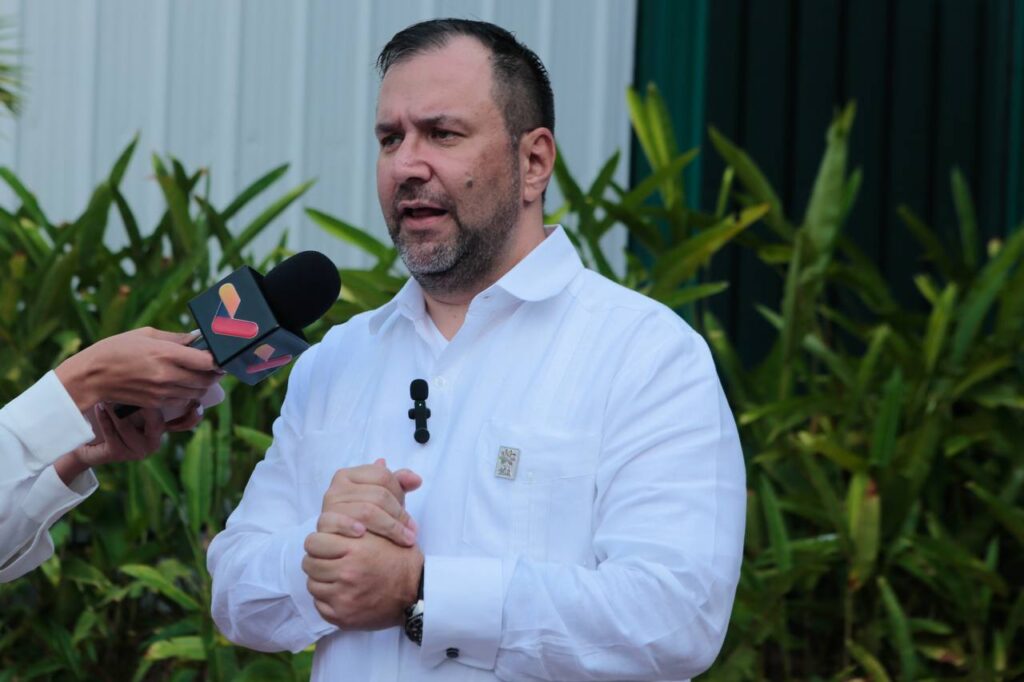
8. **Venezuelan Governmental Responses and Rhetoric**Following the interdiction of the fishing boat and the kinetic strike, the Venezuelan government issued strong condemnations. Foreign Minister Yván Gil accused U.S. forces of “illegally and hostilely” seizing a “small, harmless” fishing boat for eight hours, calling it a “direct provocation.” The ministry claimed U.S. personnel, numbering 18 and carrying long-range weapons, boarded and occupied the vessel.
These actions, according to the Venezuelan Foreign Ministry, lacked “strategic proportionality” and constituted “illegal use of excessive military means.” Caracas alleged that those who ordered the seizure were “looking for an incident to justify escalating war in the Caribbean, with the aim of regime change” in Caracas. Venezuela demanded an immediate cessation of such actions, citing threats to regional security and peace.
Venezuelan President Nicolás Maduro responded to the September 2nd strike by stating that relations with the U.S. had “been destroyed by their bomb threats.” He declared that Venezuela had moved “from a period of battered relations to a completely broken one.” Maduro vowed that his government would “fully” exercise its “legitimate right to defend itself” against perceived U.S. aggression.
In a display of defiance, the Venezuelan government called on its citizens to enlist in the militias. These armed volunteer forces, traditionally used to boost numbers at political rallies, were urged to go to military barracks for training sessions. This move underscored a heightened sense of national defense in response to the increased U.S. military presence and actions.
Military equipment: Proposed United States invasion of Venezuela
Categories: 21st-century military history of the United States, Articles with short description, CS1 Spanish-language sources (es), Cancelled invasions, Cancelled military operations involving the United States
Summary: During the first and second presidencies of Donald Trump, the possibility of a United States–led invasion of Venezuela was discussed. In 2017, during Trump’s first presidency, Trump said that he was “not going to rule out a military option” to address the worsening crisis in Venezuela and the autocratic government of Nicolás Maduro, a statement which was criticized by Venezuelan Defense Minister Vladimir Padrino López and Communications Minister Ernesto Villegas. Trump also had asked senior advisors about invading Venezuela, which was strongly recommended against by National Security Advisor H. R. McMaster, and the Trump administration instead opted for a campaign of sanctions and diplomatic pressure against Venezuela.
In 2019, amidst the Venezuelan presidential crisis, Trump said that American military intervention in Venezuela was “an option”.
In 2020, Senator Marco Rubio had proposed an invasion of Venezuela during at least two meetings with senior White House officials months before the 2020 presidential election, but was opposed by Vice President Mike Pence and Secretary of State Mike Pompeo. In November 2024, Trump appointed Rubio, who had long advocated for American military intervention in Venezuela, as his Secretary of State.
The United States surged military assets to the Caribbean in August 2025, citing the fight against drug cartels as its stated objective. On 2 September 2025, it struck a suspected drug-carrying boat with a missile and killed 11. In response, Maduro mobilized the Bolivarian Militia, raising renewed concerns about the possibility of US military intervention in Venezuela.
Get more information about: Proposed United States invasion of Venezuela
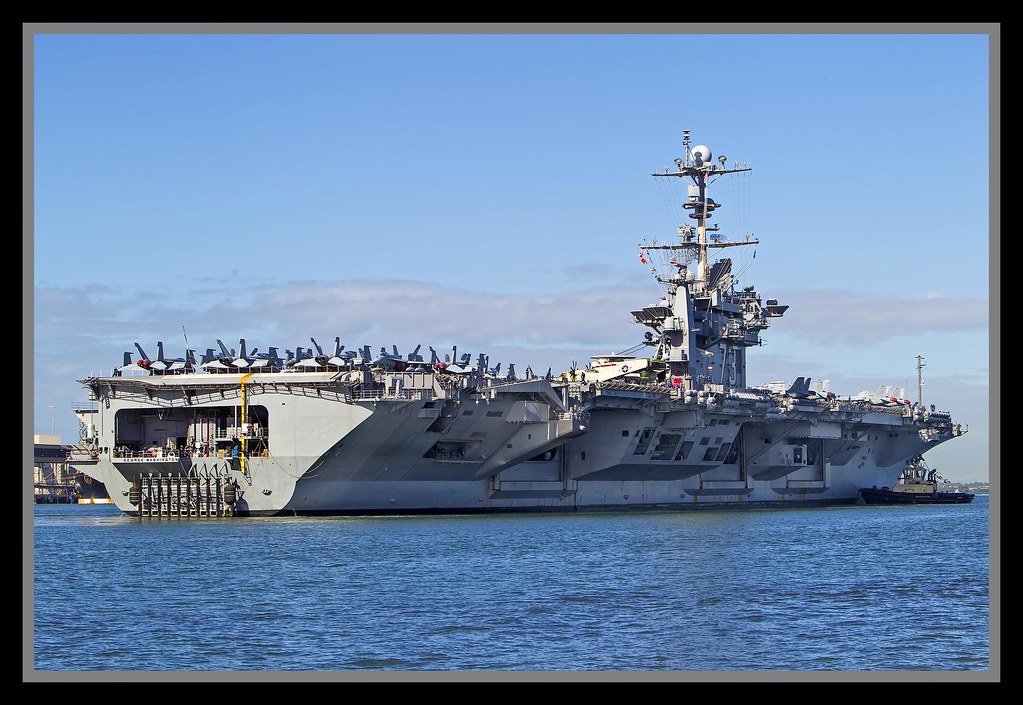
9. **Legal and Human Rights Concerns Raised by Experts**The September 2nd kinetic strike, which killed 11 people, immediately raised significant questions from legal experts regarding its adherence to international law. Experts told the BBC that the fatal strike in international waters may have violated international human rights and maritime law. The U.S. has not signed the United Nations Convention on the Law of the Sea (UNCLOS), but U.S. military legal advisors have previously stated that the U.S. should “act in a manner consistent with its provisions.”
Professor Anthony Clark Arend, a Georgetown University specialist in international law, highlighted Article 2(4) of the United Nations Charter. This article prohibits the “threat or use of force against the territorial integrity or political independence of any state” unless approved by the UN Security Council or used in self-defense against an “armed attack” or imminent armed attack. Arend noted that “there has been no evidence presented that the vessel was engaging in an armed attack or was about to be engaging in an armed attack.”
Other legal scholars questioned the proportionality of the action. Professor Michael O’Hanlon, a senior fellow at the Brookings Institution, suggested that less lethal options were available. He stated, “I am not adamantly opposed to considering this a threat, but we had recourse short of armed attack, most notably disabling the ship and arresting the crew. So in that sense, I believe we did not act consistently with the laws of war.”
Prof. Luke Moffett of Queen’s University Belfast warned that the attack could amount to an “extrajudicial arbitrary killing.” He also cautioned against the U.S. designation of cartel members as “narco-terrorists,” stating, “Labelling everyone a terrorist does not make them a lawful target and enables states to side-step international law.” These criticisms underscored a perception that the U.S. was stretching legal justifications for military action.
Furthermore, questions extended to U.S. domestic law, specifically whether the Authorization for Use of Military Force (AUMF) against terrorist groups, typically invoked since 9/11, could legitimately be applied to drug cartels. The BBC noted the ambiguity surrounding this authority, further complicating the legal framework for the strike. Despite these concerns, experts suggested that administration officials were unlikely to face consequences, given judicial deference to presidential actions in such matters.
Military equipment: Human rights in Belarus
Categories: All Wikipedia articles written in British English, All articles with dead external links, All articles with unsourced statements, Articles containing Belarusian-language text, Articles containing Russian-language text
Summary: The government of Belarus is criticized for human rights violations and persecution of non-governmental organisations, independent journalists, national minorities, and opposition politicians. In a testimony to the United States Senate Committee on Foreign Relations, former US Secretary of State Condoleezza Rice labeled Belarus as one of the world’s six “outposts of tyranny”. In response, the Belarusian government called the assessment “quite far from reality”. During the 2020 Belarusian presidential election and 2020 Belarusian protests, the number of political prisoners recognized by Viasna Human Rights Centre rose dramatically to 1,062 as of 16 February 2022. Several people died after the use of unlawful and abusive force (including firearms) by law enforcement officials while suppressing protests. According to Amnesty International, the authorities did not investigate violations during protests, but instead harassed those who challenged their version of events. In July 2021, the authorities launched a campaign against the remaining non-governmental organizations, liquidating at least 270 of them by October, including all previously registered human rights organizations in the country.
President Alexander Lukashenko has described himself as having an “authoritarian ruling style”. Western countries have described Belarus under Lukashenko as “Europe’s last dictatorship”; the government has accused the same Western powers of attempting a regime change. The Council of Europe has barred Belarus from membership since 1997 for undemocratic voting and irregularities during elections in the November 1996 constitutional referendum and parliament by-elections.
Dozens of Belarusian government officials responsible for political repressions, forced disappearances, propaganda, and electoral fraud have been subject to personal sanctions by the United States of America and the European Union.
Get more information about: Human rights in Belarus
Read more about: Beyond the Veil of Normalcy: Unmasking 14 Infamous Serial Killers and the Chilling Secrets of Their Crimes
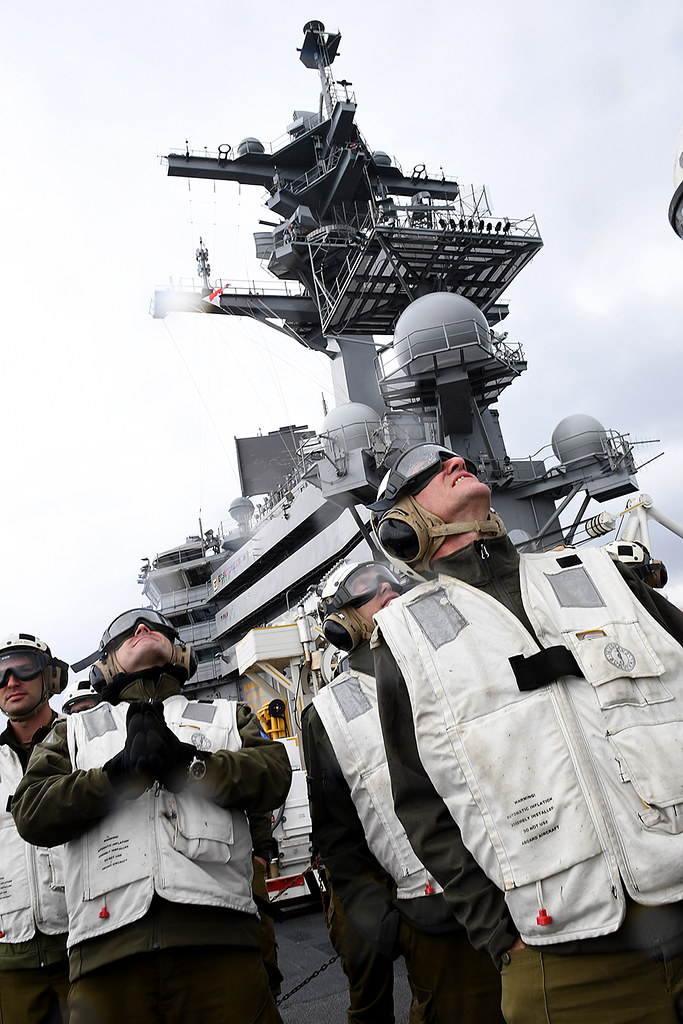
10. **The ‘Tren de Aragua’ Organization and U.S. Allegations**The U.S. identified the crew of the destroyed vessel as members of Tren de Aragua, a Venezuelan gang. According to Ronna Risquez, a Venezuelan investigative journalist, Tren de Aragua is a criminal gang that operated with the government’s knowledge out of a prison run by Venezuelan government officials. The group has reportedly established a small foothold in some parts of the U.S.
The U.S. State Department had previously designated Tren de Aragua as a Foreign Terrorist Organization in February. This designation became a critical element in the U.S. justification for the lethal strike, as officials defended the action under the authority to target such organizations. President Trump asserted that these “extremely violent drug trafficking cartels pose a threat to US national security” and are responsible for “flooding American streets and killing Americans.”
Secretary of State Marco Rubio reiterated this stance, confirming the strike against a “narco-terrorist vessel” and emphasizing Washington had “100% fidelity and certainty” that the vessel was involved in trafficking to the U.S. He also stated that such operations would continue as part of a broader effort to “wage combat against drug cartels.”
A central and contentious claim by the U.S. was that the Tren de Aragua group operates under the control of Venezuelan President Nicolás Maduro. This accusation directly linked the alleged narco-terrorist group to the Venezuelan government, intertwining counter-narcotics efforts with broader political pressure. Caracas has vehemently denied these allegations, claiming the group was dismantled during a 2023 prison raid and rejecting any ties to Maduro.
Military equipment: Tren de Aragua
Name: Tren de Aragua
NativeNameLang: es
Founded: [object Object]
FoundingLocation: Aragua
YearsActive: 2014-present
Territory: Flatlist
Ethnicity: Venezuelans
Membership: 7,000+
Leaders: Héctor Rusthenford Guerrero Flores “Niño Guerrero”
Activities: Murder,protection racket
Allies: Primeiro Comando da Capital
Rivals: La Oficina de Envigado,Clan del Golfo,FARC dissidents
Work: Cronica
Title: Otros dos asesinatos ocurrieron por guerra entre disidencias de las FARC y Tren de Aragua
Date: Mon Aug 16 2021 00:00:00 GMT-0700 (Pacific Daylight Time)
Url: National Liberation Army (Colombia),flagicon,Carabineros de Chile
Categories: 2010s establishments in Venezuela, 2020s establishments in Chile, All Wikipedia neutral point of view disputes, All articles to be split, All articles with unsourced statements
Summary: Tren de Aragua (TdA, TDA; Spanish pronunciation: [tɾen de aˈɾaɣwa]; English: Aragua Train) is a transnational criminal organization from Venezuela. Tren de Aragua is led by Héctor Rusthenford Guerrero Flores, alias “Niño Guerrero”; he was incarcerated in Tocorón prison (also known as Aragua Penitentiary Center), which functioned at the time as the organization’s de facto headquarters. The gang has expanded throughout Latin America and the United States with the mass migration of Venezuelans fleeing the regime of President Nicolás Maduro. Combating the gang has become a priority for many nations where Tren de Aragua operates. Though Tocorón prison was taken over by Venezuelan security forces in 2023, the leadership escaped.
On 20 January 2025, US President Donald Trump signed an executive order initiating the process of designating various drug cartels and transnational gangs, including Tren de Aragua, as Foreign Terrorist Organizations. The designation took effect on 20 February 2025. In March 2025, the Trump administration ordered the deportation of alleged Tren de Aragua members, citing the Alien Enemies Act of 1798. The order was temporarily halted pending further legal challenges.
In the United States, President Donald Trump has referenced Tren de Aragua in discussions of immigration policy, comparing it to organizations such as Al-Qaeda, citing its reported presence when invoking the Alien Enemies Act of 1798, a wartime law historically applied in contexts of armed conflict. This legislation affected deportation procedures for Venezuelan nationals, with the administration arguing they posed a terrorist threat. U.S. intelligence reports have indicated that the group operates independently of Venezuelan state control and lacks a coordinated structure within the country. Some analysts have compared current patterns to the 1980 Mariel boatlift, when the Cuban regime allowed mass departure of citizens, including a significant number of common prisoners and others deemed undesirable. Reports indicate criminal elements have migrated among those fleeing the ongoing humanitarian crisis, with some joining networks like Tren de Aragua in other countries. The 2023 raid on the Tocorón Penitentiary Center, considered the group’s headquarters, occurred following reports of crimes committed by the faction in neighboring nations. According to expert Keymer Ávila, both Trump’s narrative and the Venezuelan government’s handling of the situation reflect political motivations. Ávila notes that Venezuela’s structural crisis has forced millions to migrate, many of whom are later stigmatized as criminals without evidence.
Get more information about: Tren de Aragua
11. **The Alien Enemies Act and Its Controversial Use**Beyond the kinetic strike, President Trump utilized the Alien Enemies Act of 1798 in connection with alleged Tren de Aragua members. A March 15 White House proclamation, based on evidence, stated that Tren de Aragua had “invaded” the U.S. Consequently, Trump declared that any person aged 14 years or older who is a Tren de Aragua member, and who lacks U.S. citizenship or permanent residency, could be arrested, detained, and deported under this act.
The Alien Enemies Act permits the president to detain and deport individuals from a “hostile nation or government” without a hearing when the U.S. is either at war with that country or if the country has “perpetrated, attempted, or threatened” an invasion or raid, legally termed a “predatory incursion,” against the U.S. Trump controversially used this act to deport suspected members or send them to a maximum-security prison in El Salvador.
However, the application of this antiquated law faced legal challenges. Earlier this month, a federal appeals court ruled that the administration could not quickly deport Tren de Aragua members using the Alien Enemies Act. This ruling underscored the contentious nature of using such a historical statute in modern immigration and national security contexts.
Further complicating the U.S. administration’s narrative, a U.S. intelligence report cast doubt on the notion that the Tren de Aragua gang is run by President Maduro. This report directly contradicted a key accusation made by the U.S. to justify linking the criminal group to the Venezuelan government and escalating actions against it.
Military equipment: Alien and Sedition Acts
Class: “wikitable plainrowheaders”
Title: 50 USC Ch. 3: Alien Enemies
Url: https://uscode.house.gov/view.xhtml?path=/prelim@title50/chapter3&edition=prelim
Publisher: United States Code
AccessDate: Mon Mar 24 2025 17:00:00 GMT-0700 (Pacific Daylight Time)
ArchiveDate: Fri Mar 21 2025 17:00:00 GMT-0700 (Pacific Daylight Time)
ArchiveUrl: https://web.archive.org/web/20250322212342/https://uscode.house.gov/view.xhtml?path=/prelim@title50/chapter3&edition=prelim
UrlStatus: live
Categories: 1798 in American law, 5th United States Congress, Alien and Sedition Acts, All Wikipedia articles written in American English, Articles with short description
Summary: The Alien and Sedition Acts of 1798 were a set of four United States statutes that sought, on national security grounds, to restrict immigration and limit 1st Amendment protections for freedom of speech. They were endorsed by the Federalist Party of President John Adams as a response to a developing dispute with the French Republic and to related fears of domestic political subversion. The prosecution of journalists under the Sedition Act rallied public support for the opposition Democratic-Republicans, and contributed to their success in the elections of 1800. Under the new administration of Thomas Jefferson, only the Alien Enemies Act, granting the president powers of detention and deportation of foreigners in wartime or in face of a threatened invasion, remained in force.
After 1800, the surviving Alien Enemies Act was invoked three times during the course of a declared war: the War of 1812, and the First and Second World Wars. Of these three invocations, the Alien Enemies Act is best known as the legal authority behind the internment of German Americans during both World Wars, as well as internment of Italian Americans and, to a lesser extent, Japanese Americans during World War II. In March 2025, President Donald Trump invoked the Alien Enemies Act as his authority for expediting deportation of foreigners; this invocation is subject to ongoing litigation.
Get more information about: Alien and Sedition Acts
Read more about: The Perfect Chemistry: 14 On-Screen Duos So Electrifying, They Made You Forget What You Were Even Watching!

12. **Congressional Notification and War Powers Resolution**The legality of the September 2nd strike also brought into focus the U.S. War Powers Resolution of 1973. Under this law, the Trump administration was obligated to provide Congress with information on September 4th, within 48 hours of sending U.S. armed forces into certain situations abroad, detailing why the strike was carried out.
As of late afternoon on September 8th, the administration had not publicly released the identities of those on board, how the U.S. learned they were Tren de Aragua members carrying drugs, what kind of drugs were on board, or how the strike was carried out. White House deputy press secretary Anna Kelly told PolitiFact on September 5th that the strike was in defense of U.S. national interests “against the operations of a designated terrorist organization” and “fully consistent with the law of armed conflict,” but did not confirm if a response had been submitted to Congress.
Senator Mark Warner, D-Va., vice chair of the committee overseeing U.S. intelligence agencies, publicly stated on September 7th that he expected to be briefed about the incident. Warner also voiced concerns about the adherence to international laws of the sea, specifically regarding the process of interdicting boats, which typically involves “firing of a warning shot” and attempts to “try to take it peacefully.”
Historically, both Congress and the courts have shown significant deference to presidents when they assert authority to use military force. This is particularly true when a president invokes “terrorism” as the threat being addressed, as noted by Mike LaSusa, deputy director of content at InSight Crime. This pattern suggests potential obstacles for congressional oversight in challenging such executive actions.
Military equipment: War Powers Resolution
Name: War Powers Resolution
Fullname: Joint resolution concerning the war powers of Congress and the President.
EnactedBy: 93rd
EffectiveDate: Wed Nov 07 1973 00:00:00 GMT-0800 (Pacific Standard Time)
PublicLawUrl: http://www.gpo.gov/fdsys/pkg/STATUTE-87/pdf/STATUTE-87-Pg555.pdf
CitePublicLaw: 93-148
CiteStatutesAtLarge: USStat
Leghisturl: http://thomas.loc.gov/cgi-bin/bdquery/z?d093:HJ00542:@@@S
Introducedin: House
Introducedbill: USBill
Introducedby: Clement J. Zablocki
Introduceddate: Thu May 03 1973 00:00:00 GMT-0700 (Pacific Daylight Time)
Committees: United States House Committee on Foreign Affairs
Passedbody1: House
Passeddate1: Wed Jul 18 1973 00:00:00 GMT-0700 (Pacific Daylight Time)
Passedvote1: [http://www.govtrack.us/congress/votes/93-1973/h249 244–170]
Passedbody2: Senate
Passeddate2: Fri Jul 20 1973 00:00:00 GMT-0700 (Pacific Daylight Time)
Passedvote2: 75–20
Conferencedate: Thu Oct 04 1973 00:00:00 GMT-0700 (Pacific Daylight Time)
Passedbody3: Senate
Passeddate3: Wed Oct 10 1973 00:00:00 GMT-0700 (Pacific Daylight Time)
Passedvote3: [http://www.govtrack.us/congress/votes/93-1973/s451 75–20]
Passedbody4: House
Passeddate4: Fri Oct 12 1973 00:00:00 GMT-0700 (Pacific Daylight Time)
Passedvote4: [https://www.govtrack.us/congress/votes/93-1973/h382 238–122]
Vetoedpresident: Richard Nixon
Vetoeddate: Wed Oct 24 1973 00:00:00 GMT-0700 (Pacific Daylight Time)
Overriddenbody1: House
Overriddendate1: Wed Nov 07 1973 00:00:00 GMT-0800 (Pacific Standard Time)
Overriddenvote1: [http://www.govtrack.us/congress/votes/93-1973/h412 284–135]
Overriddenbody2: Senate
Overriddendate2: Wed Nov 07 1973 00:00:00 GMT-0800 (Pacific Standard Time)
Overriddenvote2: [http://www.govtrack.us/congress/votes/93-1973/s462 75–18]
Categories: 1973 in American law, 1973 in military history, All Wikipedia articles written in American English, All articles with dead external links, All articles with unsourced statements
Summary: The War Powers Resolution (also known as the War Powers Resolution of 1973 or the War Powers Act) (50 U.S.C. ch. 33) is a federal law intended to check the U.S. president’s power to commit the United States to an armed conflict without the consent of the U.S. Congress. The resolution was adopted in the form of a United States congressional joint resolution. It provides that the president can send the U.S. Armed Forces into action abroad by Congress, “statutory authorization”, or in case of “a national emergency created by attack upon the United States, its territories or possessions, or its armed forces”.
The bill was introduced by Clement Zablocki, a Democratic congressman representing Wisconsin’s 4th district. The bill had bipartisan support and was co-sponsored by a number of U.S. military veterans. The War Powers Resolution requires the president to notify Congress within 48 hours of committing armed forces to military action and forbids armed forces from remaining for more than 60 days, with a further 30-day withdrawal period, without congressional authorization for use of military force (AUMF) or a declaration of war by the United States. The resolution was passed by two-thirds each of the House and Senate, overriding the veto of President Richard Nixon.
It has been alleged that the War Powers Resolution has been violated in the past. However, Congress has disapproved all such incidents, and no allegations have resulted in successful legal actions taken against a president.
Get more information about: War Powers Resolution
Read more about: 14 Mind-Blowing 70s Moments That Would Ignite Today’s Scrutiny (And Probably Get ‘Cancelled’)
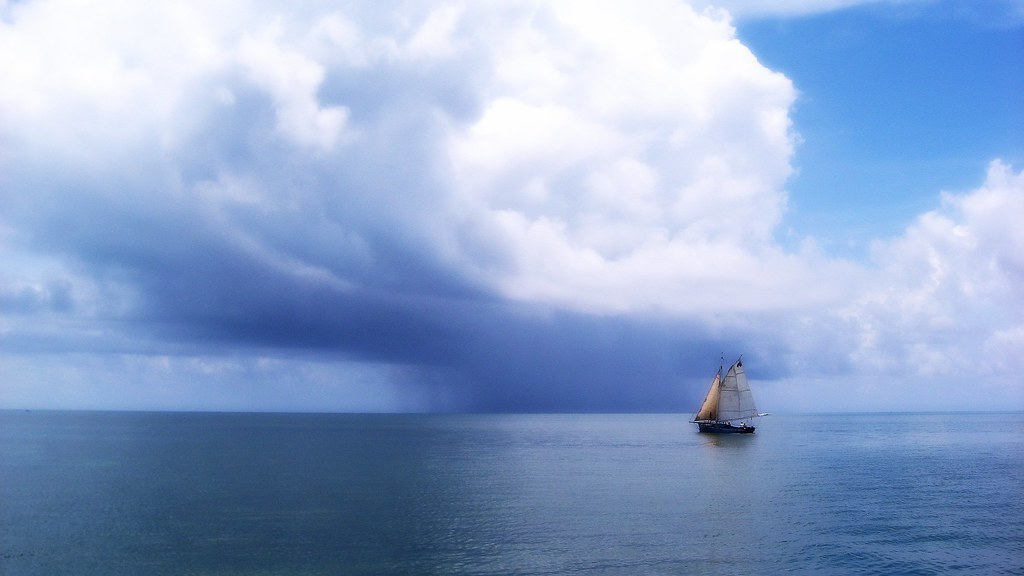
13. **Broader Strategic Implications for U.S.-Venezuela Relations**The recent U.S. military actions, particularly the kinetic strike and naval interdictions, have significantly intensified the already strained relationship between the United States and Venezuela. President Maduro’s declaration that relations had moved from “battered” to “completely broken” underscored the severity of the diplomatic fallout. These incidents represent a tangible escalation of tensions in the Caribbean.
The strike may mark a turning point in U.S. anti-drug operations in the region. If lethal interdictions become a repeated tactic, it would represent a significant departure from past maritime law enforcement practices, which traditionally focused on seizure and apprehension. CNN noted that “The use of military force against Latin American drug cartels represents a significant escalation by the Trump administration and could have serious implications for the region.”
This aggressive posture aligns with a broader U.S. policy aimed at pressuring Maduro’s government, both diplomatically and militarily. The framing of Tren de Aragua as a terrorist organization under Maduro’s control serves to intertwine drug interdiction efforts with Washington’s overarching political strategy for regime change in Caracas. The U.S. has also doubled its bounty on Maduro to $50 million, accusing him of supporting drug trafficking.
Venezuelan officials, in turn, have long accused the U.S. of using counter-narcotics as a pretext for regime change. This mutual distrust and conflicting narratives further complicate any potential de-escalation, embedding military actions deeply within a political struggle. The incidents reinforce a perception from Caracas that U.S. operations are not solely about drug enforcement but a calculated move to destabilize the Venezuelan government.
Military equipment: Proposed United States invasion of Venezuela
Categories: 21st-century military history of the United States, Articles with short description, CS1 Spanish-language sources (es), Cancelled invasions, Cancelled military operations involving the United States
Summary: During the first and second presidencies of Donald Trump, the possibility of a United States–led invasion of Venezuela was discussed. In 2017, during Trump’s first presidency, Trump said that he was “not going to rule out a military option” to address the worsening crisis in Venezuela and the autocratic government of Nicolás Maduro, a statement which was criticized by Venezuelan Defense Minister Vladimir Padrino López and Communications Minister Ernesto Villegas. Trump also had asked senior advisors about invading Venezuela, which was strongly recommended against by National Security Advisor H. R. McMaster, and the Trump administration instead opted for a campaign of sanctions and diplomatic pressure against Venezuela.
In 2019, amidst the Venezuelan presidential crisis, Trump said that American military intervention in Venezuela was “an option”.
In 2020, Senator Marco Rubio had proposed an invasion of Venezuela during at least two meetings with senior White House officials months before the 2020 presidential election, but was opposed by Vice President Mike Pence and Secretary of State Mike Pompeo. In November 2024, Trump appointed Rubio, who had long advocated for American military intervention in Venezuela, as his Secretary of State.
The United States surged military assets to the Caribbean in August 2025, citing the fight against drug cartels as its stated objective. On 2 September 2025, it struck a suspected drug-carrying boat with a missile and killed 11. In response, Maduro mobilized the Bolivarian Militia, raising renewed concerns about the possibility of US military intervention in Venezuela.
Get more information about: Proposed United States invasion of Venezuela

14. **Future Outlook and Potential for Further Escalation**The current trajectory of U.S.-Venezuela relations indicates a high potential for further escalation. President Maduro’s assertion of Venezuela’s “legitimate right to defend itself” signals a readiness to respond to perceived aggressions. This stance, coupled with the call for citizens to join militias, creates a volatile environment in the Caribbean.
The question of future U.S. military actions, specifically regarding mainland Venezuela, remains a critical unknown. When asked by a journalist on Sunday whether the U.S. would now “start doing strikes on mainland Venezuela,” President Trump responded ambiguously, “We’ll see what happens.” This open-ended statement leaves the door open for potentially more aggressive military interventions.
A prior incident involving two Venezuelan F-16 fighter jets buzzing the USS Jason Dunham on September 4th highlighted the immediate risks of confrontation. Two days after the U.S. airstrike, this “highly provocative move” prompted President Trump to warn that any Venezuelan jets putting “us in a dangerous situation” would be shot down. Such rhetoric underscores the hair-trigger nature of interactions in the region.
Experts like Susan H. Allen, an international affairs professor at George Mason University, warned about the potential consequences of these actions. “Blowing up a boat on international waters is an aggressive act — one that Venezuela may take as an act of war,” Allen said. She added, “This is how wars start. If Venezuela responds with similar violence against a U.S. ship, what stops this from escalating into all-out war?”
Ultimately, the strategic outlook remains clouded by a continued lack of transparency from the U.S. administration. Key questions about the strike’s execution, its full legal basis, and its aftermath remain unanswered. This information vacuum, combined with escalating rhetoric and military maneuvers, fuels uncertainty and raises the stakes for regional stability.
Military equipment: Earth Optimism
Categories: All articles with style issues, Articles with short description, Bright green environmentalism, CS1 maint: multiple names: authors list, CS1 maint: numeric names: authors list
Summary: Earth Optimism is a movement promoting a positive outlook towards problems related to environmental or climate issues. Earth Optimism provides an alternative narrative to mainstream environmental news by highlighting the potential for humans to positively impact the environment by making small changes at individual and community levels. It focuses on positive technological advances and ecological success stories to illustrate the potential for hope in the face of environmental challenges.
Due to occurrences such as habitat loss, the increasing number of endangered species and the rapid escalation of climate change, there tends to be a negative outlook towards the impacts of human on the Earth. The Earth Optimism approach seeks to minimize defeatist mindsets concerning the environment and has become an increasingly popular strategy that many individuals employ in order to slow and reverse negative anthropogenic impacts on the Earth.
Get more information about: Earth Optimism
Read more about: UAW Strikes Rock Big Three: Crisis Grips Ford, GM, and Stellantis
The complexities of U.S. counter-narcotics operations in the Caribbean, intertwined with the fraught political landscape of U.S.-Venezuela relations, present a formidable challenge for diplomatic resolution. As both nations double down on their respective positions, the potential for unintended incidents and further escalation looms large over the waters of the southern Caribbean. The path forward demands meticulous diplomacy and adherence to international norms to prevent an already tense situation from spiraling into a broader conflict.


